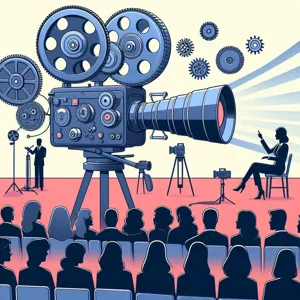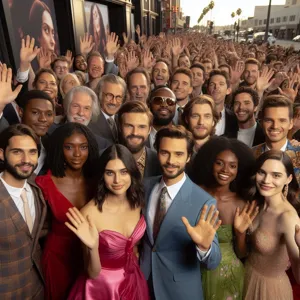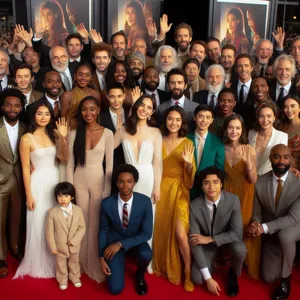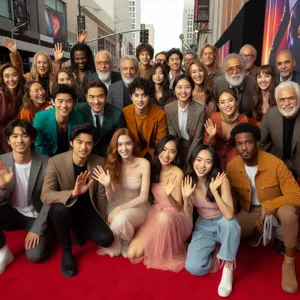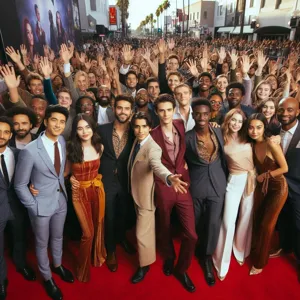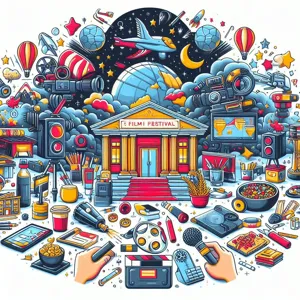The glitz and glamour of Hollywood often mask a darker narrative that unfolds behind the curtain—one that raises critical questions about the ethics of the movie industry.
While audiences are captivated by the dazzling performances and captivating stories brought to life on the big screen, many actors find themselves navigating a complex web of exploitation, financial instability, and relentless pressure. From the grueling audition processes to the cutthroat competition for roles, the journey to stardom can come at a hefty price. In this blog post, we will peel back the layers of the film industry, exploring whether the pursuit of profit overshadows the well-being of the very talents who make these cinematic wonders possible. Join us as we delve into the stories of actors, the dynamics of power, and the moral implications that challenge the integrity of an industry built on dreams yet rife with exploitation.
1. Introduction: The Glamorous Facade of Hollywood

The glitz and glamor of Hollywood often captivate millions around the globe, painting a picture of endless opportunities, luxurious lifestyles, and the dream of stardom. Shimmering red carpets, extravagant award ceremonies, and the allure of fame create a narrative that suggests a life filled with joy and success for those who dare to tread the boards of the silver screen. However, behind this dazzling facade lies a more complex and often troubling reality that raises critical questions about the ethical treatment of actors within the industry.
As audiences flock to theaters to witness the latest blockbusters, the stories of the individuals who bring these characters to life remain largely hidden. Many actors, particularly those who are just starting their careers or navigating the treacherous path of typecasting, face a harsh and competitive landscape marked by long hours, volatile job security, and financial instability. The bright lights that seem to shine on the stars often overshadow the struggles of countless talented performers who toil in obscurity, waiting for their moment in the spotlight.
This introduction sets the stage for a deeper exploration into the practices of the movie industry—examining the disparity between the perceived glamour and the grim realities. Are actors being exploited for profit? What sacrifices do they make in the pursuit of their dreams? Join us as we peel back the layers of the entertainment business, revealing the often hidden truths about the sacrifices and challenges that actors face in their quest for success.
2. Historical Context: The Evolution of the Film Industry
To fully understand the current dynamics of the film industry, it’s essential to delve into its historical context. The evolution of the film industry has been a fascinating journey, marked by significant shifts in technology, economics, and societal attitudes towards art and commerce. From the silent film era of the early 20th century to the technologically advanced blockbusters of today, the industry has transformed dramatically.
In its infancy, film was a novelty, a fleeting entertainment medium that barely paid its performers. Actors often worked under grueling conditions for meager wages, and the concept of stardom was yet to be defined. As the industry grew, so did its complexities. The advent of sound in the late 1920s ushered in a new era, and with it, the need for versatile actors who could both deliver lines and perform in front of the camera. This evolution began to lay the groundwork for a more structured industry, where actors could demand better compensation and working conditions.
By the mid-20th century, Hollywood had solidified its status as a cultural powerhouse, and the “studio system” dominated. Major studios signed stars to exclusive contracts, effectively controlling their careers and the types of roles they could take on. While this provided actors with job security, it also led to exploitation, as studios prioritized profit over artistic expression. The glamorous façade of Hollywood often masked the harsh realities behind the scenes, where actors were sometimes seen more as commodities than creative individuals.
As the industry continued to evolve, so too did the landscape of storytelling, with independent films gaining traction in the late 20th century. This shift allowed actors to explore diverse roles and narratives, but it also highlighted the disparity in financial resources between independent productions and big-budget studios. Today, with the rise of streaming services and a shift in audience consumption, actors find themselves navigating an ever-changing industry that often prioritizes profit margins over their contributions.
Understanding this historical context is crucial in recognizing the ongoing challenges actors face today. As the industry grapples with questions of equity, representation, and the impact of technology on creative work, it becomes clear that the exploitation of actors is not merely a modern issue but a persistent theme woven into the very fabric of Hollywood’s history.
3. The Reality of Casting: The Pressure to Conform
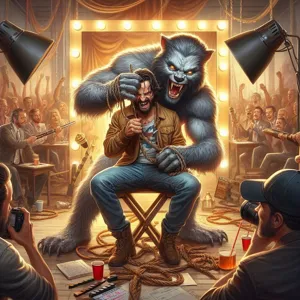
In the glimmering world of Hollywood, where dreams are spun into celluloid magic, lies an undercurrent of pressure that often goes unnoticed by the audience. The reality of casting is a complex labyrinth where the expectations of producers, directors, and studios collide with the talents and aspirations of actors. As the film industry continues to evolve, one of the most pressing issues actors face is the overwhelming pressure to conform to narrow ideals of beauty, talent, and marketability.
In casting calls, actors are frequently confronted with rigid archetypes that dictate who gets to tell stories on screen. This often translates into a relentless pursuit of a “perfect” look or a specific type that aligns with current trends. Many actors feel the weight of this expectation, leading to a painful internal struggle as they grapple with their own identities while trying to fit into pre-defined molds. This pressure can manifest in various forms, from altering physical appearance through diet and fitness regimens to adopting certain behaviors or attitudes that align with industry standards.
Moreover, the casting process itself can feel like a gauntlet, with actors subjected to numerous auditions and callbacks where they are evaluated not just on their talent but on their ability to embody these often unrealistic expectations. The stakes are incredibly high; one missed opportunity can mean losing out on a role that could have propelled a career forward, leaving many actors in a constant state of anxiety and self-doubt. This environment fosters a culture where conformity is rewarded, and individuality can often be overlooked or dismissed.
As the industry grapples with issues of diversity and representation, the need for change becomes increasingly urgent. Actors are beginning to push back against the status quo, advocating for a more inclusive and authentic representation of the human experience. Yet, the road to reform is fraught with challenges, as the desire for profit often trumps the industry’s commitment to genuine storytelling. In this high-pressure environment, the question looms: how can actors maintain their authenticity while navigating a system that often prioritizes profit over personal expression? The answer may lie in collective action and a push for a broader definition of what it means to be a successful actor in today’s film landscape.
4. Pay Disparities: Comparing Star Salaries and Supporting Roles
In the glitzy world of cinema, the spotlight often shines brightest on the leading stars, casting long shadows over the countless supporting actors who play crucial yet underappreciated roles. This stark contrast in pay has become a point of contention, raising questions about equity and fairness in an industry that thrives on collaboration. For instance, while a blockbuster film can pay its A-list actors tens of millions per film, supporting cast members often find themselves earning a fraction of that amount, sometimes just a few hundred dollars a day.
These pay disparities are not merely an issue of individual salaries; they reflect a systemic imbalance that prioritizes marquee names over the diverse talent pool that brings stories to life. The pay gap extends beyond the set, as it influences casting decisions, with studios frequently opting for big-name stars in hopes of attracting larger audiences and maximizing profits. This creates a cycle where lesser-known actors struggle to land roles, often relegated to auditions for smaller parts, while the elite command the spotlight and the salary that comes with it.
Moreover, the rise of streaming platforms has further complicated these dynamics. While some actors have seen increased opportunities in television and streaming content, the compensation often remains inconsistent and varies widely between productions. The disparity can be particularly striking when comparing a seasoned character actor’s pay for a recurring role in a hit series to that of a major film star for a single feature film. As the industry evolves, the question looms larger: how can we ensure that all actors, regardless of their fame, are fairly compensated for their contributions to the art of storytelling?
In light of these disparities, industry advocates are calling for better representation and negotiation power for supporting actors. Efforts to unionize, push for transparency in pay structures, and implement fair wage practices are gaining momentum, seeking to create a more equitable landscape in Hollywood. As audiences become more aware of these issues, the hope is that change will come—not just for the stars who captivate us on screen, but for every actor who contributes their talent, passion, and hard work to the magic of film.
5. The Role of Agents and Managers: Advocates or Exploiters?
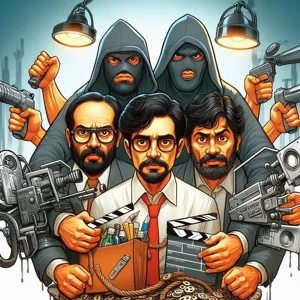
In the intricate web of the movie industry, agents and managers play pivotal roles as both advocates and gatekeepers for actors. On one hand, they are the champions of talent, tirelessly working to secure lucrative contracts, negotiate better pay, and find the best projects that align with their clients’ aspirations. They navigate the complex landscape of auditions, casting calls, and industry politics, serving as the first line of defense against exploitation. For many actors, especially those who are just starting their careers, having a skilled agent or manager can mean the difference between obscurity and stardom.
However, this relationship is not without its challenges. The very structure that allows agents and managers to advocate for their clients can also lead to exploitation. Many agents operate on a commission basis, typically taking a percentage of their clients’ earnings – often up to 10% for agents and 15% for managers. This system can create a conflict of interest if agents prioritize high-paying roles over projects that might offer artistic fulfillment or better long-term prospects for the actor’s career. Furthermore, in an industry laden with competition and financial instability, some agents may pressure actors into accepting subpar deals or overwhelming workloads that can lead to burnout, simply to secure their own income.
As actors strive to climb the ranks, the question arises: Are agents and managers truly acting in their best interests? Or are they, knowingly or unknowingly, contributing to a system that prioritizes profit over the well-being of the talent they represent? The answer is often nuanced. While some agents are genuinely dedicated to nurturing their clients’ careers, others may exploit the desperation and ambition of actors to maximize their own profits. This duality highlights the critical need for actors to seek out agents and managers who not only understand the market but also prioritize their clients’ holistic success—a balance that can be hard to find in an industry driven by profit margins and box office numbers.
6. Contracts and Agreements: Understanding the Fine Print
In the intricate world of cinema, contracts and agreements serve as the backbone of the industry, dictating the terms of engagement between actors and production companies. However, delving into the fine print can often reveal a landscape fraught with complexities that may leave actors feeling vulnerable.
For many aspiring actors, the excitement of landing a role can overshadow the necessity of thoroughly understanding their contracts. These documents often contain clauses that can significantly impact an actor’s career and financial well-being. From exclusivity agreements to profit-sharing arrangements, it’s crucial for actors to recognize how these terms can shape their future opportunities. For instance, an exclusivity clause may prevent an actor from taking on other projects, limiting their visibility and income potential.
Moreover, many contracts include language that grants production companies significant control over an actor’s image and likeness. This can mean that actors may not fully benefit from merchandising or promotional efforts tied to their performances. As the industry continues to evolve, it’s becoming increasingly important for actors to seek legal advice to navigate these agreements effectively.
Understanding the fine print isn’t just about protecting oneself; it’s also about empowering actors in an industry that can often feel exploitative. By grasping the nuances of their contracts, actors can negotiate better terms and advocate for their rights, ensuring they are not just pawns in a profit-driven game but respected partners in the creative process. As the old adage goes, knowledge is power—and in the realm of contracts, that power can make all the difference in an actor’s career trajectory.
7. The Impact of Streaming Services on Actor Compensation
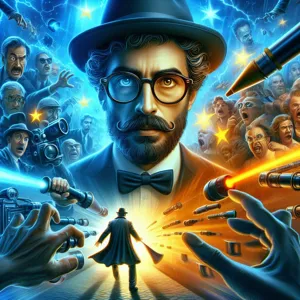
The emergence of streaming services has fundamentally reshaped the landscape of the movie industry, bringing with it a slew of new opportunities and challenges for actors. In the past, actors often earned significant revenue through theatrical releases, television syndication, and licensing deals. However, the rise of platforms like Netflix, Amazon Prime, and Hulu has introduced a new model that can undermine traditional compensation structures.
One of the most significant shifts has been the way revenue is generated. Streaming services typically operate on subscription models rather than box office sales, meaning that actors are frequently compensated with a flat fee for their work, rather than a share of the profits. This can lead to a significant disparity in earnings, particularly for lower-profile actors who may not have the same star power as A-listers. While the allure of a steady paycheck from a streaming service can be appealing, many actors find that their long-term earning potential is diminished.
Moreover, the increasing volume of content produced for streaming platforms has led to a more competitive job market. With a constant demand for new material, actors may feel pressured to accept lower pay for roles that wouldn’t have been acceptable in a more traditional context. This could be seen as a form of exploitation, where the sheer abundance of content allows companies to dictate terms and conditions that benefit them rather than the talent involved.
Additionally, the metrics used by streaming services to gauge a show’s success are often opaque. Actors may find it challenging to assess whether their work is being viewed or appreciated, making it difficult to negotiate future contracts based on performance. Without transparent viewership data, many actors remain in the dark about how their contributions impact a show’s success, further complicating their ability to advocate for fair compensation.
As the industry continues to evolve, it’s crucial for actors and industry professionals to engage in discussions about fair compensation, transparency, and the long-term implications of this streaming revolution. The future of the movie industry—and the livelihoods of countless actors—hinges on the balance between innovation and ethical treatment, ensuring that creativity is both valued and rewarded.
8. Working Conditions: The Long Hours and Physical Demands
The glitz and glamour of Hollywood often overshadow the grueling realities faced by many actors, particularly in terms of working conditions. Long hours on set have become the norm, with actors frequently clocking in 12 to 16 hours a day, sometimes even stretching into the night. This relentless schedule can take a significant toll on an individual’s physical and mental health, leaving little time for rest, recovery, or personal life.
Additionally, the physical demands of acting can be immense. Actors are often required to perform stunts, engage in intense fight sequences, or embody characters that necessitate significant physical transformation. This can involve everything from extreme dieting and rigorous workout regimens to enduring injuries sustained during demanding scenes. The pressure to maintain an ideal appearance or to push through pain in pursuit of a perfect take can create an environment where self-care is deprioritized.
Moreover, the fear of being labeled as “difficult” or “unprofessional” can discourage actors from speaking up about grueling conditions. Many feel compelled to comply with unreasonable demands simply to secure their place in an industry that is notoriously competitive and fleeting. This dynamic raises critical questions about the ethical responsibilities of producers and studios, as well as the need for better protections and support systems for those who bring stories to life on the screen.
As the industry grapples with these challenges, it becomes clear that the conversation around working conditions is not just about the hours spent on set, but also about ensuring that the welfare of actors is prioritized alongside profitability. The dichotomy between artistic expression and exploitation must be addressed if the industry is to thrive in a sustainable and humane way.
9. Mental Health Struggles: The Pressure to Succeed in a Competitive Environment
In the glittering world of cinema, where red carpets and award ceremonies create the illusion of glamour and success, there lies an undercurrent of immense pressure that often goes unnoticed: the mental health struggles of actors. In an industry that thrives on competition, where new talent emerges daily and the demand for fresh faces is ever-increasing, the pressure to succeed can become overwhelming. Many actors find themselves constantly racing against the clock to secure roles, maintain public favor, and navigate the whims of casting directors and producers.
This relentless pursuit can lead to a myriad of mental health challenges. Anxiety, depression, and feelings of inadequacy can take root, as actors grapple with the fear of rejection and the uncertainty of their careers. The pressure to maintain a certain image—both on-screen and off—can further exacerbate these struggles, leading to a toxic cycle of self-doubt and burnout. The failure to land a coveted role can feel like a personal defeat, impacting not only their professional lives but their personal relationships and self-worth as well.
Moreover, the industry’s culture often stigmatizes mental health discussions, leaving many actors feeling isolated in their struggles. The relentless hustle for success can create an environment where vulnerability is seen as weakness, prompting individuals to hide their feelings rather than seek help. As the industry slowly begins to acknowledge these issues, the need for support systems and mental health resources for actors is becoming increasingly clear.
In a world that celebrates their achievements, it is vital to remember the human beings behind the characters. They are not just performers; they are individuals navigating an intricate landscape filled with dreams, disappointments, and, too often, silent struggles. Addressing these mental health challenges is not only essential for the well-being of actors but also for the integrity of the industry as a whole. By fostering a culture that prioritizes mental health, the movie industry can begin to transform the narrative—ensuring that those who bring stories to life are not just surviving, but thriving.
10. Case Studies: High-Profile Actors and Their Experiences
In the often-glamorous world of Hollywood, the glimmering facade of fame and fortune can sometimes obscure the harsh realities faced by actors. To truly understand the complexities of the film industry, we can look at case studies of high-profile actors who have bravely shared their experiences, shedding light on the exploitation that can lurk behind the scenes.
Take the case of **Jennifer Lawrence**, one of the highest-paid actresses in Hollywood. Although she has enjoyed phenomenal success with blockbuster films, Lawrence has spoken candidly about the pressures and inequalities within the industry. In her revelations, she highlighted the gender pay gap, noting that she was initially offered significantly less than her male co-stars for the same roles. Her experience underscores a broader systemic issue where female actors often face exploitation in terms of compensation, despite their box office appeal and talent.
Similarly, **Ryan Gosling** has discussed the grueling nature of film promotions and the toll it takes on actors’ mental health. He revealed that while the allure of red-carpet events and international tours can be exhilarating, the relentless pressure to maintain a public persona and the scrutiny from the media can lead to burnout and feelings of exploitation. His candid reflections remind us that the life of an actor is not just about the roles they play but also the emotional and psychological burdens they carry.
Then there’s **Evan Rachel Wood**, who has been outspoken about the toxic work environments that can exist in the industry. Wood has shared her own experiences of mistreatment and exploitation, advocating for better protections for actors, especially young ones. Her activism sheds light on the need for industry reforms to create safer, more equitable working conditions, emphasizing that many actors may endure unacceptable treatment in pursuit of their dreams.
These case studies reveal a troubling pattern where actors, despite their fame and success, often navigate a landscape fraught with challenges that can lead to exploitation. By highlighting their experiences, we can begin to unravel the complexities of the movie industry and advocate for a healthier, more fair environment for all performers. As audiences, it’s crucial to be aware of these issues; supporting actors who speak out and pushing for systemic change can help create a more equitable industry for future generations.
11. The Rise of Independent Films: A Double-Edged Sword
The rise of independent films has undeniably transformed the landscape of the movie industry, providing a platform for diverse voices and innovative storytelling that often goes unheard in the mainstream. However, this burgeoning movement also presents a double-edged sword, particularly when it comes to the treatment of actors. On one hand, independent films offer opportunities for budding talent to showcase their skills, often with fewer barriers to entry than big-budget productions. Actors can find roles that reflect their unique experiences and perspectives, and many have launched successful careers through standout performances in indie features.
Yet, the allure of indie films can conceal harsh realities. While these projects may promise creative freedom, they often come with limited budgets that can lead to precarious working conditions. Actors may find themselves juggling multiple roles, including promotional work, while receiving a fraction of what their counterparts in mainstream films earn. The pressure to perform without the safety net of substantial financial backing can lead to burnout and dissatisfaction. Additionally, many independent films struggle to secure distribution, leaving actors with little to show for their hard work when the project fails to reach audiences.
As the independent film sector continues to grow, it raises critical questions about the sustainability of this model. Are actors being exploited for the sake of art? Or are they empowered by the chance to participate in projects that align with their creative vision? The answer is complex and varies from project to project. As audiences, it’s essential to support ethical practices within the indie film community, ensuring that actors are not just seen as tools for profit but are valued for their contributions to storytelling. The rise of independent films, while promising, necessitates a careful examination of how actors are treated and compensated, ensuring that the spirit of creativity does not overshadow the need for fair treatment and respect.
12. Advocacy and Change: Movements Challenging Exploitation
In recent years, the conversation surrounding the exploitation of actors in the movie industry has gained momentum, giving rise to various advocacy movements aimed at challenging the status quo. These grassroots efforts have sparked critical dialogues about fair treatment, transparency, and the fundamental rights of performers, shining a spotlight on the systemic issues that have long plagued the industry.
Organizations such as the Screen Actors Guild-American Federation of Television and Radio Artists (SAG-AFTRA) and the International Alliance of Theatrical Stage Employees (IATSE) have become pivotal in advocating for better working conditions and equitable pay for actors and crew members alike. Through collective bargaining, these unions strive to ensure that all performers receive fair wages, appropriate benefits, and a safe working environment. Recent strikes and protests have underscored the urgency of these issues, bringing together actors from various backgrounds to demand change and accountability from production companies.
Moreover, grassroots initiatives and social media campaigns have empowered a new generation of actors to voice their concerns and share their experiences. Platforms like #MeToo and #TimesUp have not only addressed issues of harassment and discrimination but have also expanded the discourse to include the economic exploitation of performers. These movements emphasize the importance of solidarity among artists, encouraging them to unite against unfair practices and advocate for their rights.
As awareness grows, more actors are stepping forward to expose the unsustainable demands placed upon them, from grueling filming schedules to lack of job security. The call for change is resonating across the industry, with many artists and activists pushing for reforms that prioritize the well-being of those who bring stories to life. By creating a community of support and advocacy, these movements are challenging the entrenched norms of exploitation, paving the way for a more equitable future in the entertainment industry.
In conclusion, the fight against exploitation in the movie industry is gaining traction through advocacy and collective action. With continued support and determination, there is hope for a transformative shift that respects and uplifts the individuals at the heart of storytelling.
13. Future Trends: How Technology is Reshaping the Industry
As we peer behind the curtain of the movie industry, one cannot ignore the seismic shifts brought about by technology. The digital revolution is not just a backdrop to the cinematic narrative; it’s a powerful force reshaping every aspect of filmmaking, distribution, and audience engagement.
With the advent of streaming platforms, traditional distribution models are being upended. No longer confined to the limited release windows of theaters, films can now reach global audiences in an instant. This democratization of access has empowered independent filmmakers, allowing them to showcase their work without the backing of major studios. However, it has also led to a saturation of content, forcing actors to navigate an increasingly competitive landscape where visibility can be fleeting.
Moreover, the rise of artificial intelligence (AI) and virtual reality (VR) is revolutionizing the creative process itself. AI-driven tools are being used to enhance scriptwriting, analyze audience preferences, and even create digital performances that blur the lines between reality and fiction. While this innovation offers exciting opportunities for storytelling, it raises ethical questions about the authenticity of performances and the potential for actors to be replaced by virtual avatars.
The industry is also witnessing a shift in how films are financed and marketed. Crowdfunding platforms enable filmmakers to connect directly with their audience, bypassing traditional studio gatekeepers. This not only alters the power dynamics within the industry but also gives actors a chance to engage with their fans in more meaningful ways, fostering loyalty and support for their projects.
As technology continues to evolve, the conversation around exploitation in the industry must adapt as well. With the tools for creating and distributing content becoming more accessible, actors are increasingly being asked to take on multiple roles—both in front of and behind the camera. While this can lead to greater creative freedom, it also raises concerns about fair compensation and the sustainability of such an approach.
In summary, the future of the movie industry is being reshaped by technological advancements that present both opportunities and challenges for actors. As we navigate this changing landscape, it’s crucial to remain vigilant about the implications for artistic integrity and the fair treatment of those whose talents are at the heart of storytelling. The balance between innovation and exploitation will be a defining issue for the industry in the years to come.
14. Conclusion: Balancing Profit with Ethics in the Movie Industry
The film industry, with its dazzling lights and glamorous red carpets, often masks a more complex reality. As we draw this discussion to a close, it’s crucial to reflect on the delicate balance between profit and ethics in Hollywood. On one hand, the pursuit of profit has driven the industry to produce some of the most unforgettable stories and stunning visuals that captivate audiences worldwide. On the other hand, this relentless chase can lead to the exploitation of the very talent that brings these stories to life.
Actors, especially those at the beginning of their careers, often find themselves caught in a web of low pay, long hours, and an overwhelming emphasis on marketability over artistry. While the industry thrives on the allure of star power, it frequently overlooks the importance of fair compensation and ethical treatment. This dichotomy raises pressing questions about the sustainability of a business model that prioritizes profits over the well-being of its creative contributors.
As viewers, we must advocate for a system that values not only box office numbers but also the people behind the scenes. Supporting initiatives that promote fair wages, reasonable working conditions, and diversity in casting can drive change. By demanding accountability from studios and producers, we can foster an environment where creativity and ethics coexist harmoniously.
Ultimately, the future of the movie industry hinges on its ability to reconcile the pursuit of profit with a commitment to ethical practices. As audiences, we hold the power to influence this balance. By making informed choices about the films we support and the companies we endorse, we can help shape an industry that honors its artists as much as it seeks to entertain us. The curtain may be drawn on the inner workings of Hollywood, but the conversation about its ethical implications must continue.
15. Resources for Actors: Navigating the Industry Safely
Navigating the complexities of the movie industry can feel like traversing a labyrinth, especially for aspiring actors who may find themselves overwhelmed by the sheer volume of information and the myriad of challenges they face. Fortunately, a wealth of resources exists to help actors maneuver through these treacherous waters safely and effectively, ensuring they don’t become unwitting victims of exploitation.
**1. Actor’s Unions and Guilds:** One of the most vital resources for actors is their local or national unions, such as the Screen Actors Guild-American Federation of Television and Radio Artists (SAG-AFTRA) in the United States. These organizations advocate for fair wages, safe working conditions, and equitable treatment, providing members with a safety net of legal support and industry guidelines. Joining a union not only enhances an actor’s credibility but also connects them with a community that shares knowledge and experiences.
**2. Training and Workshops:** Many reputable acting schools and workshops offer courses that teach not only the craft of acting but also the ins and outs of the business. These programs often include modules on industry ethics, contracts, and negotiation tactics, empowering actors to make informed decisions about their careers. Furthermore, networking opportunities with seasoned professionals can provide invaluable insights into navigating challenges.
**3. Online Platforms and Communities:** The digital age has birthed numerous online platforms tailored for actors, such as Casting Networks and Backstage, which connect talent with jobs while providing industry insights and educational resources. Additionally, social media groups and forums dedicated to actors can serve as a sounding board for sharing experiences, tips, and warnings about potential scams or exploitative practices.
**4. Legal Resources:** Understanding contracts and legal jargon can be daunting, but several organizations and websites offer resources tailored to actors. Access to legal counsel specializing in entertainment law can help actors comprehend their rights and obligations, ensuring that they are not signing away their creative freedoms or financial earnings inadvertently.
**5. Mental Health Support:** The pressures of the industry can take a toll on an actor’s mental well-being, making access to mental health resources essential. Organizations like The Actors Fund provide support services, including counseling and financial assistance, helping actors manage the emotional challenges that often accompany the pursuit of a career in film and television.
By leveraging these resources, actors can not only safeguard themselves against exploitation but also empower their artistic journeys. The movie industry, with all its glitz and glamour, can indeed be a challenging landscape to navigate, but with the right knowledge and support, actors can find their footing and thrive in this dynamic environment. Ultimately, staying informed and connected is key to ensuring a successful and sustainable career in the ever-evolving world of cinema.
As we draw the curtain on our exploration of the movie industry’s complex relationship with its actors, it’s clear that the question of exploitation is both multifaceted and deeply resonant. While the glitz and glamour of Hollywood often overshadow the struggles faced by many performers, our examination reveals a more nuanced reality where ambition, creativity, and economic pressures collide. By shedding light on these practices, we hope to encourage a more informed dialogue about the value of artistic contributions and the ethical responsibilities of those at the helm of the industry. As consumers of film, we hold the power to demand change and support initiatives that prioritize the well-being of actors. Let us continue to advocate for fairness and transparency, ensuring that the stories we cherish are told with integrity and respect for all those involved in their creation. Thank you for joining us on this critical journey behind the curtain—together, we can work towards a more equitable future in film.






